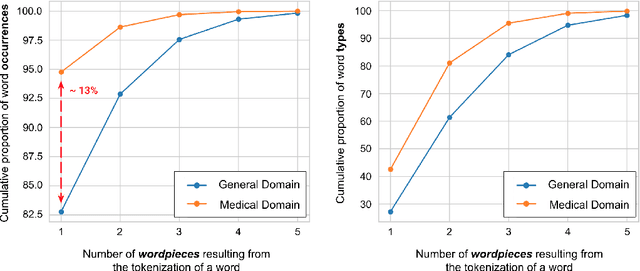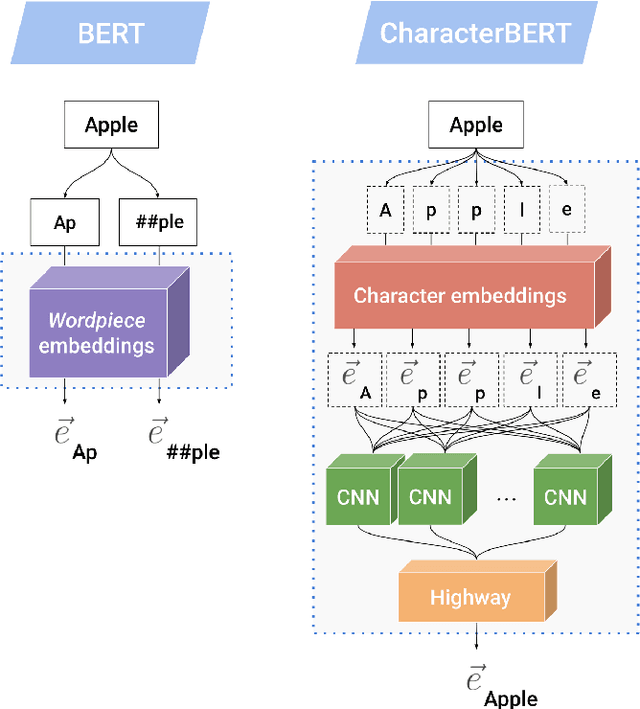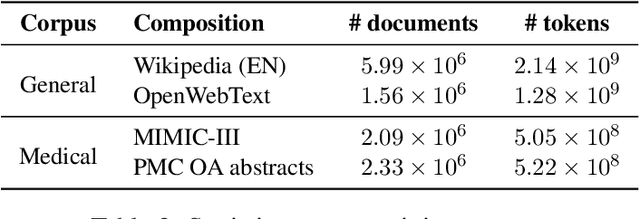Junichi Tsujii
CharacterBERT: Reconciling ELMo and BERT for Word-Level Open-Vocabulary Representations From Characters
Oct 31, 2020



Abstract:Due to the compelling improvements brought by BERT, many recent representation models adopted the Transformer architecture as their main building block, consequently inheriting the wordpiece tokenization system despite it not being intrinsically linked to the notion of Transformers. While this system is thought to achieve a good balance between the flexibility of characters and the efficiency of full words, using predefined wordpiece vocabularies from the general domain is not always suitable, especially when building models for specialized domains (e.g., the medical domain). Moreover, adopting a wordpiece tokenization shifts the focus from the word level to the subword level, making the models conceptually more complex and arguably less convenient in practice. For these reasons, we propose CharacterBERT, a new variant of BERT that drops the wordpiece system altogether and uses a Character-CNN module instead to represent entire words by consulting their characters. We show that this new model improves the performance of BERT on a variety of medical domain tasks while at the same time producing robust, word-level and open-vocabulary representations.
Transfer Fine-Tuning: A BERT Case Study
Sep 03, 2019



Abstract:A semantic equivalence assessment is defined as a task that assesses semantic equivalence in a sentence pair by binary judgment (i.e., paraphrase identification) or grading (i.e., semantic textual similarity measurement). It constitutes a set of tasks crucial for research on natural language understanding. Recently, BERT realized a breakthrough in sentence representation learning (Devlin et al., 2019), which is broadly transferable to various NLP tasks. While BERT's performance improves by increasing its model size, the required computational power is an obstacle preventing practical applications from adopting the technology. Herein, we propose to inject phrasal paraphrase relations into BERT in order to generate suitable representations for semantic equivalence assessment instead of increasing the model size. Experiments on standard natural language understanding tasks confirm that our method effectively improves a smaller BERT model while maintaining the model size. The generated model exhibits superior performance compared to a larger BERT model on semantic equivalence assessment tasks. Furthermore, it achieves larger performance gains on tasks with limited training datasets for fine-tuning, which is a property desirable for transfer learning.
 Add to Chrome
Add to Chrome Add to Firefox
Add to Firefox Add to Edge
Add to Edge